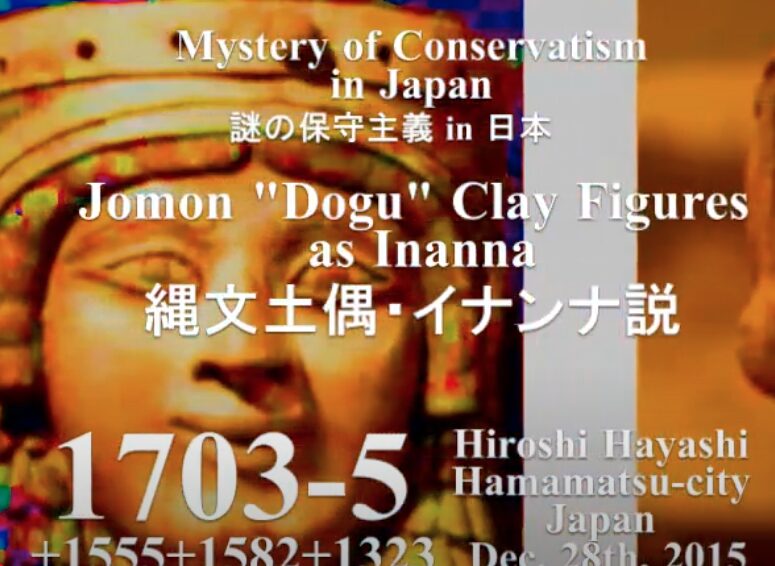Note: This article contains elements of urban legends and historical hypotheses. It includes content that has not been factually confirmed, and should be enjoyed purely as a thought experiment or piece of speculative writing.
- What is “Tartaria”?
- Was Hokkaido Once Tartarian Territory?
- The Connection Between “Tatara” and “Tartaria”?
- Not Japanese Style? The Mystery of Edo Period Architecture and Clothing
- Umbert’s “Shogun’s Temple” Also Western Architecture?
- A Civilization Buried Underground? The Mud Flood Theory
- Zōjō-ji as a Post-Mud Flood Building?
- Remnants of “Tartarian Architecture” Across Japan
- The Great Famines of the Edo Period: Was Hunger Truly the Cause?
- And the Biggest Question: Did the “Edo Period” Not Exist?
- In Conclusion: Fiction, or a Forgotten Truth?
What is “Tartaria”?
Have you ever heard the term “Tartarian Empire”? Once, a mysterious empire called Tartaria was marked on world maps. This entity, said to have stretched primarily across modern-day Russia and Siberia, mysteriously vanished from maps after the 19th century. However, this “lost civilization” is once again drawing attention. And remarkably, there is a theory that Japan too might have been under Tartarian influence.
Was Hokkaido Once Tartarian Territory?
According to one hypothesis, Hokkaido was once Tartarian territory, and other parts of Japan were “friendly nations” influenced by it. Fuyu’e Anzai, a poet from the Taishō to Shōwa periods, penned a verse in his poem “Spring”:
“A single butterfly crossed the Dattan (Tartar) Strait”
This “Dattan Strait” refers to the current “Mamiya Strait,” the channel between Sakhalin (Karafuto) and the Russian mainland. In European countries, it’s called the “Tatar Strait.” Some consider this a poetic yet symbolic expression indicating a connection between Japan and Tartaria.
The Connection Between “Tatara” and “Tartaria”?
Many place names across Japan include “Tatara,” deriving from tatara iron-making. However, some theories point to a connection between “Tatara” and “Tartaria.” What if the advanced technology for producing iron was actually brought from the Tartarian civilization…?
Below, we’ve compiled information on regions, characteristics, and historical sites related to “Tatara” throughout Japan:
【1】Chūgoku Region (Shimane, Tottori, Okayama): The Heartland of Tatara Iron-Making
- Shimane Prefecture, Okuizumo Region (Unnan City, Okuizumo Town):
- One of Japan’s leading centers for tatara iron-making. The traditional tatara-buki (bellows forging) method is still practiced today.
- Nittōho Tatara: The only traditional iron furnace still in operation in Japan (produces tamahagane steel for swords).
- Iron History Museum (Unnan City): Learn about the history of Izumo tatara and the tools and processes of iron-making.
- Also connected to mythology, said to be a model for “Princess Mononoke.”
- Tottori Prefecture, Nichinan Town:
- Tatara artisans are said to have gathered deep in the mountains to produce iron.
- “Tatara Folk Museum” introduces their lifestyle and beliefs.
- Okayama Prefecture, Niimi City / Maniwa City:
- Part of the ancient Kibi Province, rich in iron ore (iron sand).
- Scattered settlements and shrines developed through tatara are found here.
【2】Kinki Region
- Hyōgo Prefecture, Shisō City / Sayō Town / Yabu City:
- In the Harima region, many tatara settlements called “Sannai” existed.
- Produced high-quality iron, such as “Chigusa iron.”
- Local shrines maintain beliefs of enshrining “Kanayamahiko” (god of blacksmiths) and “gods of tatara.”
【3】Shikoku Region
- Kochi Prefecture / Tokushima Prefecture (mountainous areas):
- Small tatara operations were scattered along the Niyodo River basin, etc.
- Locally, tatara artisans were treated as a special group, merging with mountain god worship.
【4】Kyushu Region
- Kumamoto Prefecture / Ōita Prefecture:
- Remains of iron mining and processing exist around the Aso volcanic range and Yabakei.
- Place names like “Tatara-dani” (Tatara Valley) and “Tatara-yama” (Tatara Mountain) remain.
【5】Tōhoku Region
- Akita Prefecture / Iwate Prefecture / Aomori Prefecture:
- Iron-making was somewhat later here, but in the Edo period, the Nanbu clan developed tatara iron-making for military purposes.
- Many “Tatara-ba Ato” (Tatara site ruins) have been confirmed.
【6】Kantō Region
- Gunma Prefecture (around Mount Akagi):
- A long tradition of iron-making, with numerous tatara iron-making sites.
- Names like “Tatara-tōge” (Tatara Pass) and “Tatara-sawa” (Tatara Marsh) remain.
- Saitama Prefecture, Chichibu:
- Remnants of tatara iron-making in mountainous areas. Mining and iron ore extraction were also active.
【7】Chūbu Region
- Niigata Prefecture, Itoigawa City / Nagano Prefecture, Saku City:
- Magnetite extracted from Mount Hiuchi, etc., was used since ancient times.
- The connection to “hiuchigane” (flint steel) and “Mount Hiuchi” is also intriguing.
【8】Hokkaido and Eastern Japan: The Word “Tatara” and Place Names
- Hokkaido:
- Records show that artisans from Honshu settled after the Edo period and attempted iron-making in southern Hokkaido.
- Some place names like “Tatara-sawa” and “Tatara-rin” (Tatara Forest) remain.
- These are interesting as Japanese (Yamato) place names, not Ainu.
Not Japanese Style? The Mystery of Edo Period Architecture and Clothing
Montanus’s “Atlas Japannensis,” drawn by a Dutch missionary in the 17th century, depicts a Japan completely different from our imagined “Japanese style.”
Itinerarium Orientalis Indicis Navium: “Journal of the Dutch East India Company Embassy to Japan” – Aobane Antiquarian Bookshop – Foreign Books, Art Books, Academic Books (This link from the original text directs to an antiquarian bookshop’s page about Montanus’s work.) “Journal of the Dutch East India Company Embassy to Japan” – Aobane Antiquarian Bookshop, based in Kyoto, focuses on art books, academic books, and foreign books, sourcing rare and hard-to-find titles from overseas. We also accept orders for rare books.
For example, Kyoto’s Sanjūsangen-dō. While often considered a prime example of Japanese architecture, its depiction at the time looks just like a Roman temple. The clothing of the people also appears to be from India, the Middle East, or the West.
Is This Japan? Montanus’s Depiction of a Mystical and Strange Country (This link from the original text refers to an article discussing Montanus’s depiction of Japan.) I once researched hidden Christian okake-e during my student days. [What are “Okake-e,” the Sacred Paintings of Hidden Christians?] At that time, I don’t remember where I saw it, but probably in a book or something, I found an intriguing copperplate engraving illustration. This is it…
Furthermore, in a painting of “Japanese god Kannon (觀音),” a Naga-like being is depicted, with stone pillars and arches that appear to be of Tartarian style. These records show a scene drastically different from the “Edo Period” we learned about in textbooks. The current Sanjūsangen-dō is entirely Japanese in style, though.
Umbert’s “Shogun’s Temple” Also Western Architecture?
The “Shogun’s Temple” depicted by the French painter Aimé Humbert, who visited Japan at the end of the Edo period, is presumed to be the current Zōjō-ji Temple in Shiba.
Aimé Humbert’s “Pictorial Japan and the Japanese” Illustration: Interior of the Edo Shogun’s Temple (Zōjō-ji), Buddhist Statues at Atago-yama Prayer Hall | ToMuCo – Tokyo Museum Collection (This link from the original text directs to a museum collection page.) Tokyo Metropolitan Museum and Art Museum Collection Search.
However, its appearance is like a Greek temple. It bears no resemblance whatsoever to the current Zōjō-ji. So where did this colossal building disappear to?
A Civilization Buried Underground? The Mud Flood Theory
The key to solving this mystery is the hypothesis of the “Mud Flood.” This is a supposed great catastrophe that occurred worldwide around the early 19th century, specifically in 1816, where entire cities were buried by massive amounts of mud. In Japan, the fact that many city buildings are built on stone foundations is considered a remnant of this disaster. In fact, it’s not uncommon for the “basement level” of old buildings to be used as the first floor above ground. The buried lower levels might be structures from before the Mud Flood…
Zōjō-ji as a Post-Mud Flood Building?
Daihonzan Zōjō-ji Temple (This link from the original text directs to the official website of Zōjō-ji Temple.) The official website of Daihonzan Zōjō-ji Temple, deeply connected to the Tokugawa Shogun family. Zōjō-ji in Shiba, Tokyo, has a 600-year history and is cherished as a “temple of good fortune” enshrining the “Kurohonzon,” a hidden Buddhist statue associated with Tokugawa Ieyasu.
July 15, 2025: Did they intentionally change the background of the top page a bit?
The current Zōjō-ji Temple, reconstructed in 1974 (referring to “Shogun’s Temple”), stands on stone steps. This implies that “the topography had already changed at the time of its reconstruction.” In other words, the former Zōjō-ji might have already been buried in mud, and the current temple built on top of it.
Remnants of “Tartarian Architecture” Across Japan
It is claimed that many Tartarian-style buildings once existed in major cities across Japan, such as Niigata, Osaka, and Tokyo. The “Triumphal Arch” in Nakanoshima, Osaka, in 1937, or in Shinbashi during the Russo-Japanese War, were all surprisingly Western-looking and gigantic structures.
Going to See the Triumphal Arch of the Russo-Japanese War (This link from the original text directs to a website about the Russo-Japanese War Triumphal Arch.)
Some theories suggest these were not mere decorations but legacies of the Tartarian civilization, functioning to regulate wireless power or energy flow.
The Great Famines of the Edo Period: Was Hunger Truly the Cause?
The “Tenpō Great Famine” of 1833 is said to have caused hundreds of thousands of deaths. Records indicate that an “epidemic” followed, but some view this as “not an epidemic, but actually radiation exposure.” 1,500 skeletons were discovered in Umeda at the time. They were said to be buried in a commoner’s graveyard, but was that truly the case? Could the Mud Flood have been the real cause…?
And the Biggest Question: Did the “Edo Period” Not Exist?
What if… a Mud Flood devastated previous cities, and then the story of the “Edo Period” was constructed in a short time afterward? This suggests that the “Edo Period” we believe in might have been nothing more than a reset history created after the Meiji era. So, what about historical dramas then…? Most family trees and graves were created after the Meiji era. There was even a period when family trees were sold. Only a few genuine family trees likely remain.
In Conclusion: Fiction, or a Forgotten Truth?
The theories presented in this article are not academically proven. However, history may still contain “blanks” and “lost stories” that we are unaware of. How much of this do you believe is fiction, and how much is truth? For us living today, re-evaluating such narratives might lead not only to rediscovering “lost technologies” but also to reconnecting with a “lost spirituality.”



コメント